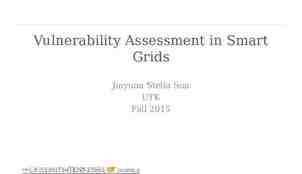Records Management Training Module 1 Part A United States Army
24 Slides566.35 KB
Records Management Training Module 1 Part A United States Army
Course Objectives Upon completing Part A, you will be able to: Understand and recognize the benefits of Records Management Know the difference between temporary and permanent records Identify key players in the Army Records Management program Distinguish between Records, Nonrecords, and Personal Papers, and
What is Records Management? Records Management is simply the name given to the process of managing records from the moment they are created, up until they are no longer needed for business purposes. Per 44 U.S.C. 2901(2), Records Management is officially defined as “the planning, controlling, directing, organizing, training, promoting, and other managerial activities involved with respect to records creation, records maintenance and use, and records disposition in order to achieve adequate and proper documentation of the policies and transactions of the Federal Government and effective and economical management of Agency Operations.”
Why Records Management? It is required by law. The Federal Records Act of 1950 (44 U.S.C. 21, 29, 31 and 33) as amended, and other statutes require all Federal agencies to practice Records Management. The Act also establishes basic responsibilities for Records Management in the federal government. As a federal employee or contractor you are subject to federal laws and regulations. Violation of federal laws could result in criminal penalties.
Criminal Penalties There are criminal penalties for unlawfully, deliberately, or accidentally: Removing, concealing, or altering federal records Damaging, destroying, deleting, or losing federal records Disclosing national security information, and Using federal records for personal purposes The consequences may include one or more of the following: A fine, 3 years imprisonment, or both Removal from office, and Disqualification from holding any other office in the government As you hopefully will not be doing anything to incur criminal penalties, let’s see what benefits may be gained by practicing effective Records Management.
Records Management Benefits Records Management significantly contributes to the smooth operation of the Army’s programs by making information readily available when needed for effective decision-making. It also: Protects the rights of the army, its employees, and its customers Protects records from inappropriate and unauthorized access, and Provides continuity in the event of a disaster In addition, properly managing records also helps you: Reuse valuable work that you or someone has done in the past Produce evidence as to why a particular decision was made, and Contribute to documenting the history, society, and culture of the United States
Who is Responsible for Army Records Management? The short answer is: Everyone All Army employees and contractors have three basic obligations regarding federal records. These are: To create, capture, and describe records used for business To ensure that records are handled in accordance with federal regulations and lawfully disposed of when they are no longer needed for business purposes To secure, store, and preserve records so that information can be found when needed, and In addition to Records Management being everyone’s responsibility, there are key players in the Army who have specific roles in managing Army records.
Records Management Key Players In the Army These include: Commanders at all levels Action Officers Army Records Officials The U.S. Army Records Management and Declassification Agency (RMDA), and The National Archives and Records Administration (NARA) Commanders are responsible for the establishment and maintenance of effective records management programs within their Commands to ensure proper collection, preservation, and safeguarding of records.
Records Management Key Players In the Army All Action Officers who create or receive records must save these records into the Army system. Army Records Officials include Records Administrators, Records Managers, Records Coordinators, and Records Holding Area Managers. They are responsible for: Providing guidance and clarification necessary to carry out the provisions of army records management programs, and Managing, overseeing, directing, and evaluating the records management program for the agency, activity, or installation to which they are assigned More detailed information on Army Records Officials’ responsibilities will be provided in Module 2 of this course.
Records Management Key Players In the Army RMDA is responsible for: Providing oversight and program management for the Army’s records management program Establishing programs for records collection and preservation from garrison, training, contingency, and war time operations Operating and sustaining the Army Electronic Archive, and Providing the means to identify, collect, index, store and retrieve important Army records in hard copy and electronic media
Records Management Key Players NARA is the federal authority with oversight for managing all federal records as established by 44 U.S.C. Chapter 21. NARA is responsible for: Providing records management guidance and is the sole approval authority for the destruction of federal records Evaluating agency records management programs Operating federal records centers for records storage, and Serving as the final keeper of records that need to be archived forever
What is a Record? A record is information in all formats that is created, sent, or received in the course of your job and that provides evidence of your agency’s business. Content determines whether the item is a record. Per 44 U.S.C 3301, Records are: “All books, papers, maps, photographs, machine-readable materials, or other documentary materials, regardless of physical form or characteristics, made or received by an agency of the United States Government under Federal law or in connection with the transaction of public business and preserved or appropriate for preservation by that agency or its legitimate successor as evidence of the organization, functions, policies, decisions, procedures, operations, or other activities of the Government or because of the informational value of the data in them.” Records come in all forms. They can be in paper, electronic, videotape, audiotape microform, or other media.
What is a Record? Based on content, examples of records may include: Phone and text messages Faxes Emails Policy and briefing papers Photographs Websites including social media sites Records must be identified and filed separately from other materials that are not records. Records may be removed from the Army only with prior approval from NARA and the Army.
What is a Record? How can you tell if something is a record? If you can answer Yes to any of these questions: Is it used to conduct agency business? Does it have informational value or serve as evidence of agency functions, policies, decisions or procedures? Is it material from another office or outside agency upon which you took action? Does it document any business actions such as, what was decided, or advice given? Is it a unique document related to agency business? It is a Record! Keep in mind that while it is a record for you, it may be a record for someone else as well, which means there may be multiple record copies of the same material For more information, see 36 CFR 1222.12 – “What types of documentary materials are Federal records?”
Multiple Record Copies Determining whether a particular document is a record does not depend on whether it is an original or a copy. As shown in the figure, several copies of a single document may each be a record copy because: Each serves a separate administrative purpose and They are maintained separately with other relevant records However for sets of publications, only one record copy is maintained by the proponent. Well, if it is not a Record, what is it?
Nonrecords If it is not a record, it is either a Nonrecord or a Personal Paper. What are Nonrecords? Nonrecords are government-owned documentary materials that do not meet the conditions in the legal definition of records. Nonrecord material has no real evidential or informational value. Nonrecords may include: Drafts and worksheets Transmittal sheets and envelopes Duplicate copies Routing slips Supplies of publications and blank forms Catalogs and journals How can you be sure if something is a Nonrecord?
Nonrecords If you are not sure if something is a Nonrecord ask yourself these questions: If you can answer Yes to any of these questions: Is it uncirculated or draft material that does not contain substantive comments? Is it published or processed information used as reference? Is it a copy kept for convenience only? Is it maintained information that does not reflect program business? Is it junk mail or a document with no work-related value? It is a nonrecord When in doubt, treat it as a Record! Nonrecords must be identified and filed separately from Records and Personal Papers . What are Personal Papers?
Personal Papers Personal papers, also referred to as “manuscripts,” are defined in 36 CFR 1222.36(a) as: ".documentary materials, or any reasonably segregable portion thereof, of a private or nonpublic character that do not relate to or have any effect upon the conduct of agency business." Personal papers generally fall into the following three categories: 1. Materials accumulated before joining Government service that are subsequently not used to conduct Government business, such as personal reference material. 2. Materials relating solely to a person’s private affairs that do not relate to agency business, such as: Private political associations Professional affiliations Family and personal correspondence, or Personal volunteer and community service information
Personal Papers 3. Work-related papers. These may: Include diaries, notes, and personal calendars that are not prepared, received, or used in the process of transacting agency business. Contain work related information but may be considered to be personal papers if they serve only a person’s own purposes and are not circulated. If information about private matters and agency business appears in the same document, the document should be copied at the time of receipt, with the personal information deleted, and treated as a record. Personal papers should be maintained separately from records and nonrecords, and clearly labeled “Personal Papers.” Personal papers may be removed from the Army without Army or NARA approval.
Temporary and Permanent Records Records are either temporary or permanent. Temporary Records: Can be destroyed upon approval from NARA after a fixed period of time, or after the occurrence of an event Require storage when not actively in use, and May be destroyed by an agency when the approved time for destruction is up Occasionally NARA may approve the donation of temporary records to an eligible person or organization. The vast majority of the Army’s records are temporary. What about Permanent Records?
Temporary and Permanent Records Permanent Records: Are determined by NARA to have sufficient historical value, and must never be destroyed Require special care and handling, and Must be transferred to NARA’s ownership to preserve forever once they are no longer needed for business purposes Whether a record is temporary or permanent determines what eventually happens to it in the Records Lifecycle We will address the Records Lifecycle in Module 1 Part B
Module 1, Part A Summary So far we have covered: The definition of records management Benefits derived from practicing records management Who in the Army is responsible for records management How to identify records, nonrecords, and personal papers, and Temporary and permanent records
References Federal Regulations 44 U.S Code Chapter 31, Sections 3101, 3102 Records Management by Federal Agencies 44 U.S Code Section 2901(2) Definition of Records Management 44 U.S Code Section 3301 - Definition of a Record 36 CFR, Chapter 12, Subpart B - Federal Records Management Army Policy & Guidance DA Pam 25-403 Department of the Army Pamphlet, Guide to Recordkeeping in the Army AR 25-1 Army Information Technology Websites US Army RMDA National Archives and Records Administration





























